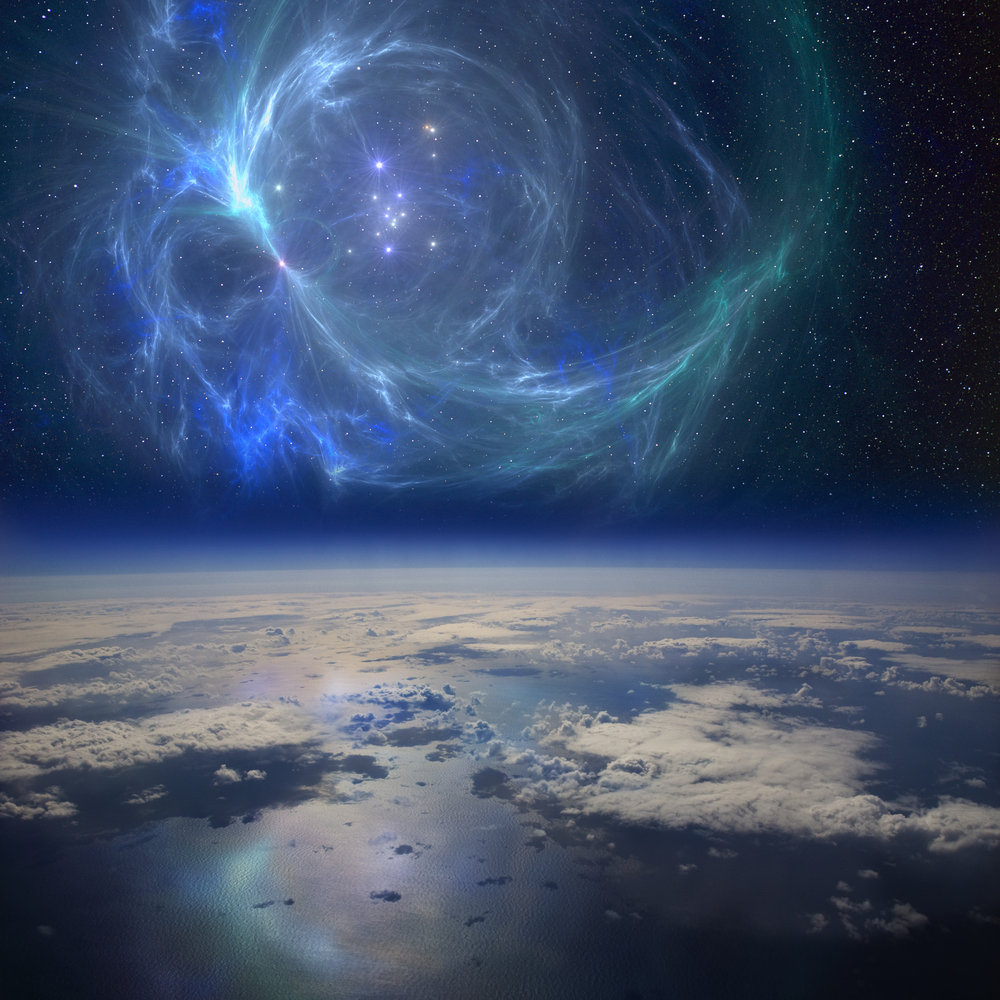Exploding Stars Helped Kill Earth's Ancient Sea Monsters, New Study Suggests

For tens of millions of years, Earth's oceans were crowded with 5,000-lb. (2,200 kilograms) turtles, whale-size sea cows and sharks as large as school buses. Then, about 2.6 million years ago, they started dying in droves.
The mass die-off known as the Pliocene marine megafauna extinction may have wiped out more than a third of Earth's large marine species (including the beloved megalodon — a Jaws-like shark that measured up to 80 feet, or 25 meters, long). Today, scientists still don't know exactly why it happened. Climate change was definitely a factor; it was the start of a new Ice Age in which glaciers began replacing oceans, and coastal food sources were severely diminished. But did climate change alone cause this deadly event, or are there more pieces to this deadly puzzle? [Wipeout: History's Most Mysterious Extinctions]
A new paper scheduled to be published in the 2019 edition of the journal Astrobiology suggests one bold possibility: Perhaps exploding stars helped slay the giants of the deep.
According to Adrian Melott, lead study author and professor emeritus of physics and astronomy at the University of Kansas, there is evidence that a nearby supernova — or possibly a string of multiple supernovas — coincided with the start of the great die-off that rid the world of its largest marine life. If these stellar explosions were strong enough and close enough to Earth, they could have drenched the world in stellar radiation, gradually raising the incidence of mutation rates and cancers among Earthly fauna for hundreds of years. The larger an animal was, Melott wrote in the new study, the more radiation they were likely to absorb, thus worsening their chances for survival.
"We estimated the cancer rate would go up about 50 percent for something the size of a human — and the bigger you are, the worse it is," Melott said in a statement. "For an elephant or a whale, the radiation dose goes way up."
Melott and his colleagues based a large part of their hypothesis on a pair of papers from 2016 that found traces of the isotope iron-60 — a radioactive variant of iron with a half-life of about 2.6 million years — in ancient seabed deposits on Earth. If these radioactive isotopes had formed with the Earth, they'd be "long gone by now," Melott said in the statement, so they must have been "rained down on us" several million years ago instead.
The scientists who wrote one of the 2016 papers linked these isotopes to a series of supernovas that occurred between 8.7 million and 1.7 million years ago, erupting about 325 light-years from Earth. According to Melott, that's far enough away to prevent such explosions from seriously damaging our planet, but close enough that Earth would still have been in the path of some cosmic radiation.
Get the Space.com Newsletter
Breaking space news, the latest updates on rocket launches, skywatching events and more!
Part of this radiation would have taken the form of muons — heavy, electron-like particles that form when cosmic rays collide with other particles in our planet's atmosphere. According to Melott, because a muon is "a couple hundred times more massive" than an electron, it's also more likely to penetrate hundreds of miles underground or deep into the ocean. If lots of muons were to start raining down on the sea during the fallout from a nearby supernova, large sea creatures could have potentially come into contact with huge quantities of these radioactive particles. The resulting radiation might have caused mutations, cancer and mass death, Melott and his colleagues wrote.
This amped-up supply of cosmic radiation, coupled with other known factors like climate change, could have been one of the levers of change that doomed Earth's marine giants. Melott noted that the evidence of a nearby supernova explosion is just "another piece in the puzzle" that is the Pliocene marine megafauna extinction, and further investigation into many possible factors is still required. We may never know what exactly killed the megalodon, but while scientists look for clues at the bottom of the sea, they may as well look up at the stars, too.
Originally published on Live Science.
Join our Space Forums to keep talking space on the latest missions, night sky and more! And if you have a news tip, correction or comment, let us know at: community@space.com.

Brandon has been a senior writer at Live Science since 2017, and was formerly a staff writer and editor at Reader's Digest magazine. His writing has appeared in The Washington Post, CBS.com, the Richard Dawkins Foundation website and other outlets. He holds a bachelor's degree in creative writing from the University of Arizona, with minors in journalism and media arts. He enjoys writing most about space, geoscience and the mysteries of the universe.










